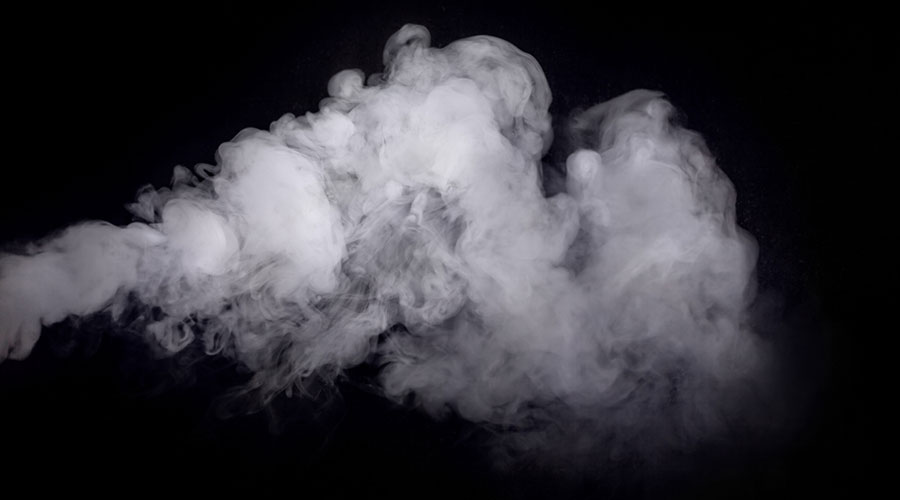It may be worth raising a stink about that smoker nearby
First, the good news: On the whole, cigarette smoking in Canada is declining. Nearly 17% of people 12 years and older were smokers in 2017 compared to just under 18% in 2015 (which was down from about 20% in 2011).
The bad news: Smoking-related illnesses continue to kill tens of thousands of Canadians a year, including 1,000 in 2012 who died of conditions brought on by second-hand smoke.
More bad news, particularly for innocent bystanders: Even as cigarettes decline, smoking in general seems poised for resurgence. E-cigarette use, or vaping, increased significantly between 2013 and 2015, according to a University of Waterloo study. Now, the legalization of cannabis may further complicate matters, at least where use is permitted in Edmonton.
What does that mean to the health of non-smokers who might be denied a breath of fresh air? We asked Respiratory Therapy instructor Graham Werstiuk (class of ’06) about the risk that remains once the smoke clears.
Cigarettes, e-liquids and cannabis are full of bad stuff
Cigarettes
 When asked to list the the dangers of cigarette smoke, Werstiuk laughs. “There’s a lot. It depends on what kind of time you have,” he says. “Even though it’s [secondary], you’re still exposed to most of what’s in cigarettes.” To name just a few of the risks:
When asked to list the the dangers of cigarette smoke, Werstiuk laughs. “There’s a lot. It depends on what kind of time you have,” he says. “Even though it’s [secondary], you’re still exposed to most of what’s in cigarettes.” To name just a few of the risks:
- Nicotine – this chemical is highly addictive, keeping smokers coming back for more, which means more exposure to other dangerous chemicals
- Particulate matter – this mix of tiny bits of random stuff irritates the lungs, leading to excess mucus production (a by-product of the body’s effort to protect sensitive tissues) and even a thickening and constriction of airways that develop scar tissue
- Various toxic chemicals – some of these paralyze the cilia, says Werstiuk. These tiny protuberances from lung cells clear out junk like little brooms, except when stalled by cigarette smoke. The result is smoker’s cough. “In the morning, when you’ve gone a whole night without smoking, those cilia kick back in action and you wake up and all this mucus and trash has built up in the lungs”
- Carcinogens – of the 250 known harmful substances in cigarettes, 69 are known to cause cancer. Lung cancer is the big one, says Werstiuk, but esophageal cancer is also a major concern
- Heart trouble – “people just think about their lungs,” says Werstiuk, “but the heart is significantly involved as well. [As a smoker] you have three times the risk of ischemia, or reduced blood flow and oxygen to your heart. So your chance of heart attack goes up”
Vaping
 “We know cigarettes have at least 5,000 chemicals, most of them bad for you,” says Werstiuk. “E-cigarettes have much less, but that’s not to say in any way that they’re benign.”
“We know cigarettes have at least 5,000 chemicals, most of them bad for you,” says Werstiuk. “E-cigarettes have much less, but that’s not to say in any way that they’re benign.”
Watch out for nicotine, irritants such as polypropylene glycol (a known troublemaker for mucus membranes) and heavy metals from the plate in the e-cigarette that heats the liquid. Over time, those metals will leach into the vapour. Many of them are proven carcinogens.
Cannabis

“There’s an idea, at least that I perceive, that somehow marijuana is more natural and more healthy, but you’re still burning something and you’re releasing the same kind of chemical compounds that come with cigaretes – the volatile organic compounds and stuff you shouldn’t be breathing in general,” says Werstiuk.
“There’s no safe exposure level for these chemicals.”
As with smoking, there’s a known cancer risk with marijuana smoking, including a two- to four-fold increase in the chance of lung cancer (a light cigarette smoker runs a five-fold risk). What’s more, “your airways might close up more with a marijuana joint than a cigarette,” Werstiuk adds, noting the lack of filter that some of the particulate matter both substances harbour.
He issues a special warning for those with jobs that require periodic drug testing. Second-hand smoke has measurable tetrahydrocannabinol, or THC, the main psychoactive component of marijuana. Studies have shown the compound in the saliva and urine of non-smokers in the same room with a smoker, says Werstiuk.
“So even if you’re hanging out with your friends and you never touch a joint, you can trigger a [positive reaction] in a drug test.”
Protecting yourself from second-hand smoke

“It’s all about concentration,” says Werstiuk. An exposure of a few seconds on the street “is not going to be an issue.” If your tarp at your favourite music festival is directly downwind of nearby indulgers, chances are good that the shifting breeze will keep your lungs fairly clean.
Indoors, if you’re in a room or vehicle where smoke of any kind accumulates for any amount of time, Werstiuk advises caution. Even if you politely refuse cigarettes, vaping or joints, “You might as well be smoking yourself.”